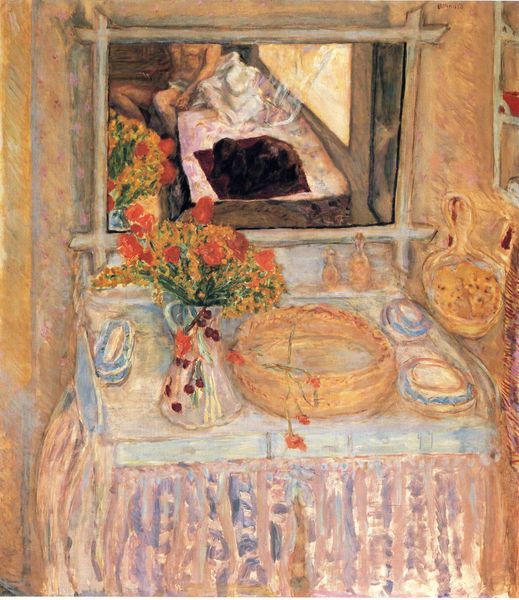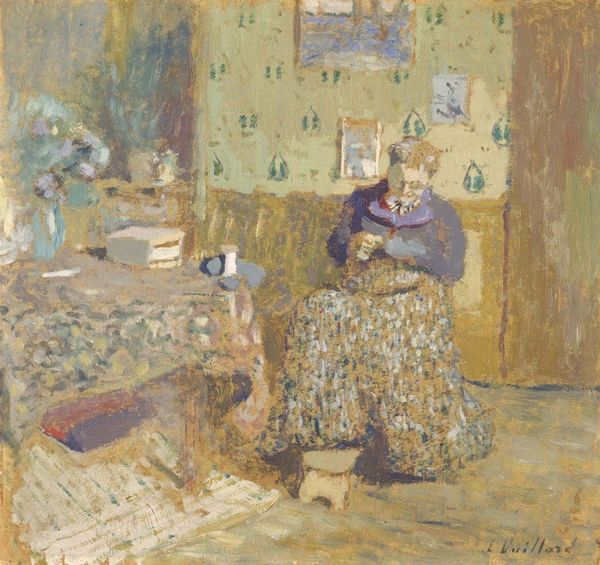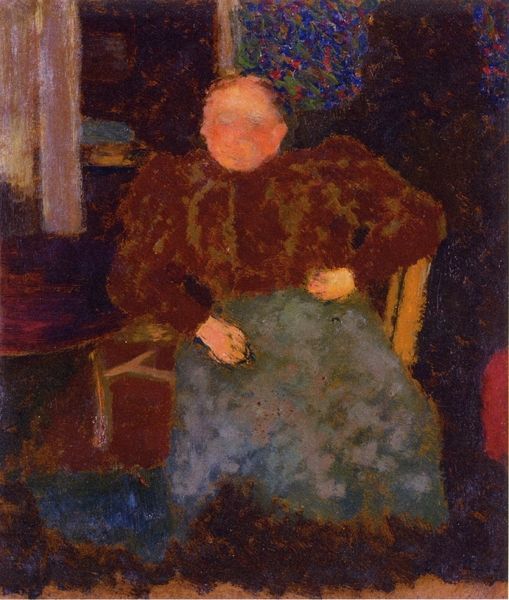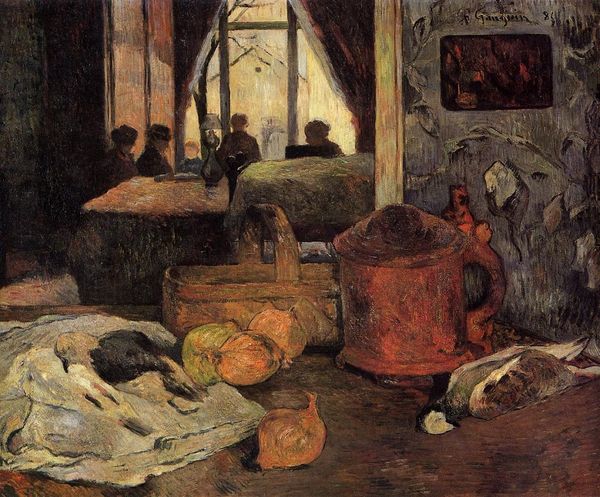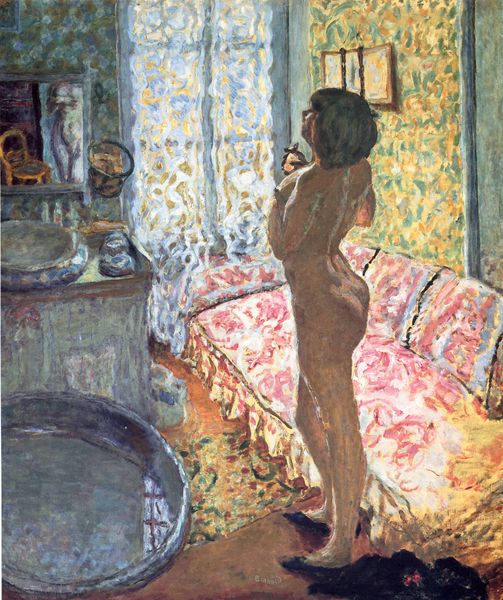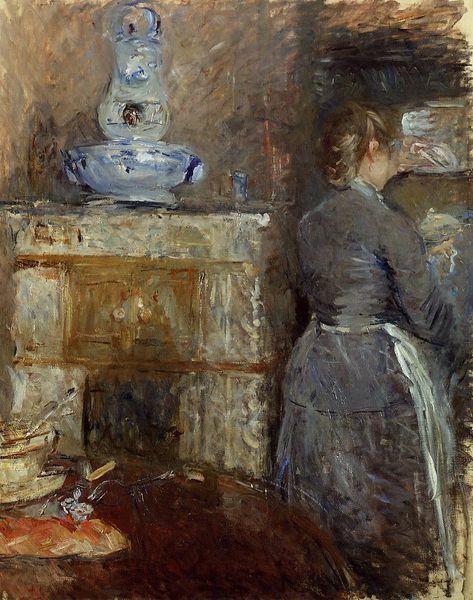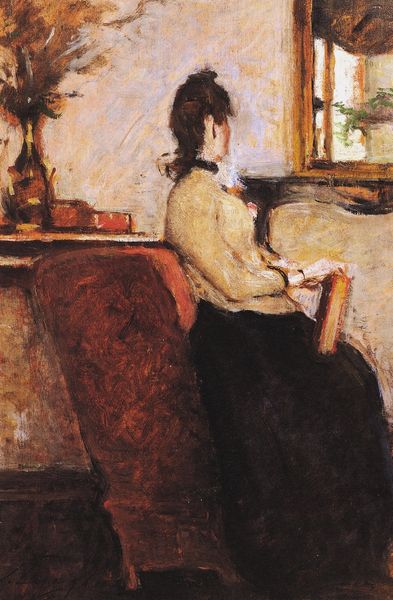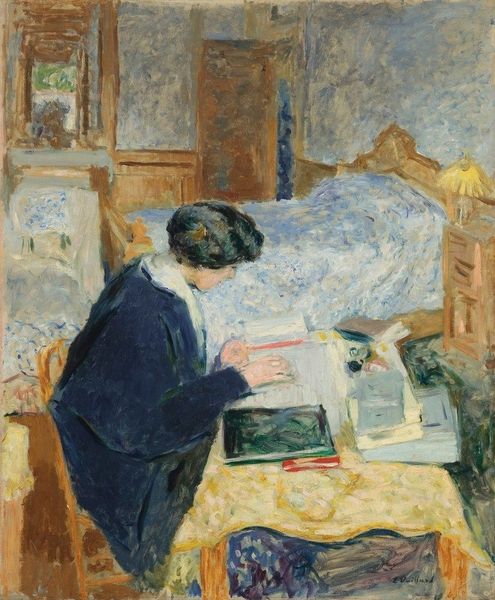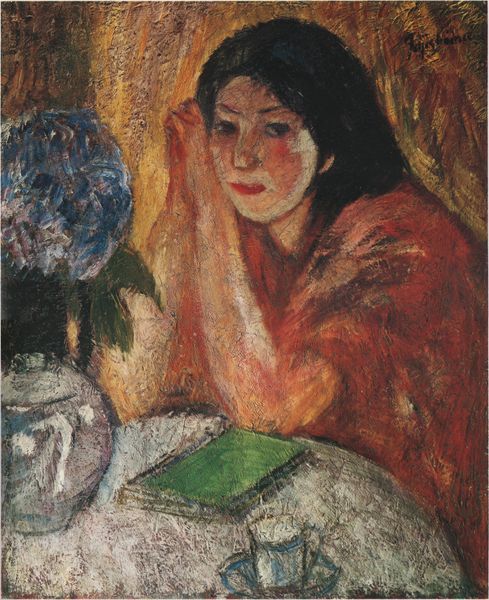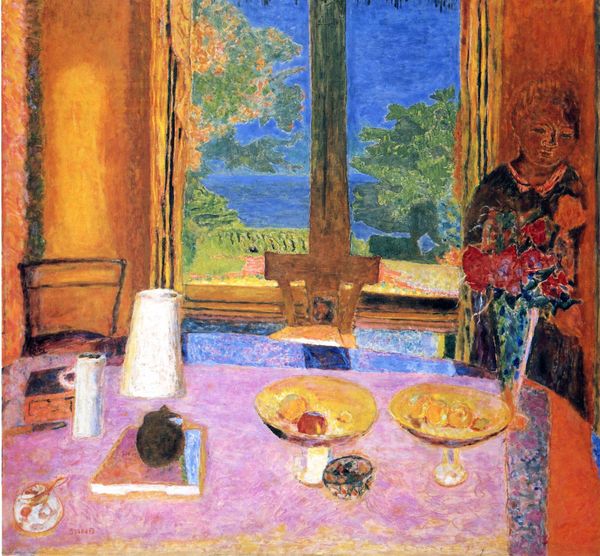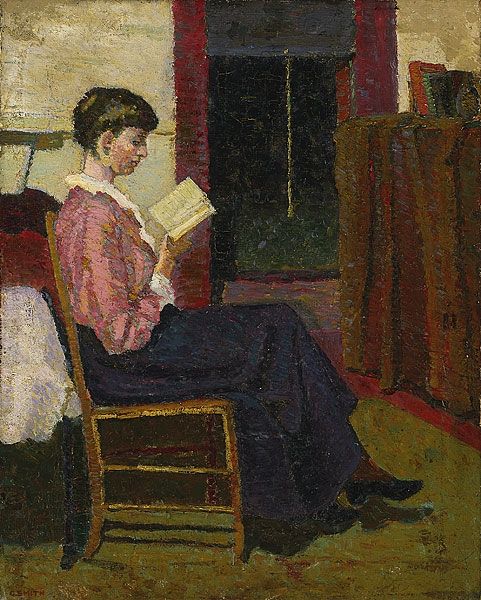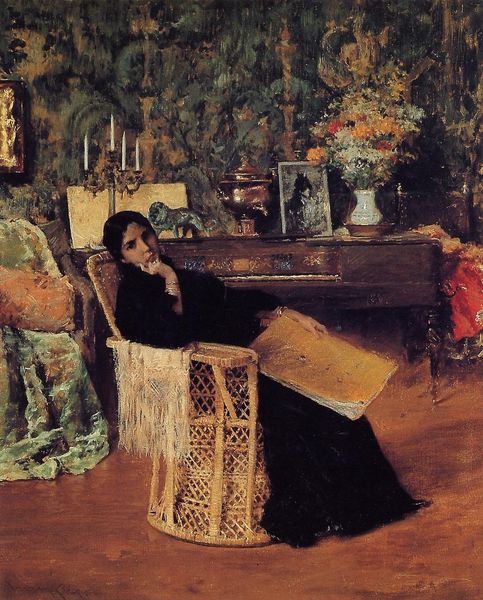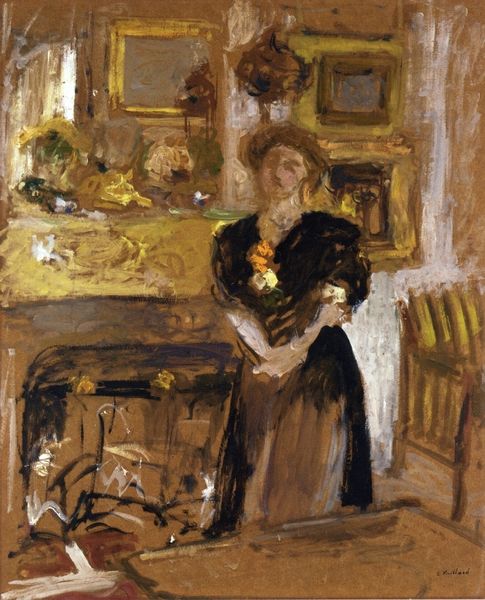
Dimensions: 116 x 121 cm
Copyright: Public domain
Curator: Pierre Bonnard’s "The Bowl of Milk," painted in 1919, hangs here at the Tate Britain. Editor: The whole scene feels steeped in melancholy. The woman’s downcast gaze, the muted light, even the textured brushstrokes lend a heavy, introspective air. Curator: Bonnard was a master of Intimism, portraying domestic life and private moments. One interesting angle here is post-war domesticity and anxieties during this moment in social history. The war concluded the year before. What do we learn from this domestic depiction about a larger societal perspective? Editor: Let's zoom in on the materiality for a second. It seems oil on canvas, of course, but look closer, the layering, the scumbling…it feels like he’s not just representing, but actually building this quiet domesticity, brick by painted brick. Notice that bowl of milk is only loosely defined? It speaks of sustenance but also something less resolved, something uncertain about labor. Curator: Exactly! The "uncertain" aspect relates well to my view of post-war anxieties during that era. Editor: Right! Also, his wife, Marthe, often served as his muse. Do we consider this painting a commentary on her social positioning in society at this time? It isn't as though she could have been working somewhere other than this setting. Curator: Perhaps her perceived social role is another contributing factor to the work’s underlying pensive tone. This leads into considering gendered perspectives within the broader scope of art and societal constructs. Editor: Considering this piece and its themes, do you feel this piece’s location within Tate Britain, the people it serves, affects the narrative itself? Or conversely, that the artwork and its success change perceptions of domesticity in contemporary culture? Curator: Absolutely! Museums play a crucial role in shaping public perception. Housing "The Bowl of Milk" here elevates a private, intimate scene, inviting viewers to consider the artistic and cultural significance of the everyday, offering both critical examination and aesthetic appreciation. Editor: This piece's materiality underscores that connection between the public and the private, doesn’t it? I am now really appreciating its somber feel and the ways Bonnard worked the surface to elicit those specific feelings. Curator: Me too. It's these quiet narratives that often speak volumes about larger social and historical currents.
Comments
No comments
Be the first to comment and join the conversation on the ultimate creative platform.
